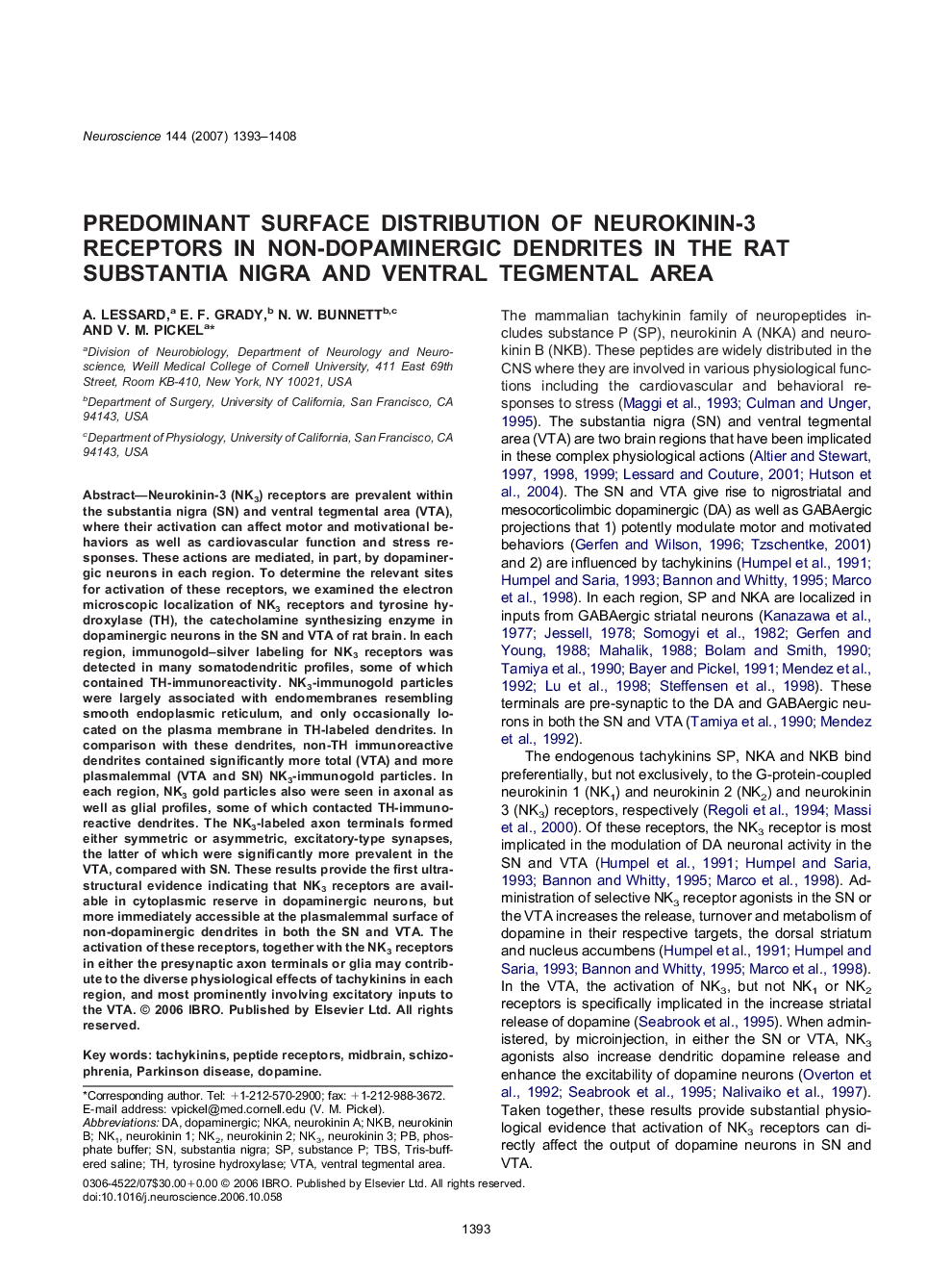| Article ID | Journal | Published Year | Pages | File Type |
|---|---|---|---|---|
| 4341239 | Neuroscience | 2007 | 16 Pages |
Neurokinin-3 (NK3) receptors are prevalent within the substantia nigra (SN) and ventral tegmental area (VTA), where their activation can affect motor and motivational behaviors as well as cardiovascular function and stress responses. These actions are mediated, in part, by dopaminergic neurons in each region. To determine the relevant sites for activation of these receptors, we examined the electron microscopic localization of NK3 receptors and tyrosine hydroxylase (TH), the catecholamine synthesizing enzyme in dopaminergic neurons in the SN and VTA of rat brain. In each region, immunogold–silver labeling for NK3 receptors was detected in many somatodendritic profiles, some of which contained TH-immunoreactivity. NK3-immunogold particles were largely associated with endomembranes resembling smooth endoplasmic reticulum, and only occasionally located on the plasma membrane in TH-labeled dendrites. In comparison with these dendrites, non-TH immunoreactive dendrites contained significantly more total (VTA) and more plasmalemmal (VTA and SN) NK3-immunogold particles. In each region, NK3 gold particles also were seen in axonal as well as glial profiles, some of which contacted TH-immunoreactive dendrites. The NK3-labeled axon terminals formed either symmetric or asymmetric, excitatory-type synapses, the latter of which were significantly more prevalent in the VTA, compared with SN. These results provide the first ultrastructural evidence indicating that NK3 receptors are available in cytoplasmic reserve in dopaminergic neurons, but more immediately accessible at the plasmalemmal surface of non-dopaminergic dendrites in both the SN and VTA. The activation of these receptors, together with the NK3 receptors in either the presynaptic axon terminals or glia may contribute to the diverse physiological effects of tachykinins in each region, and most prominently involving excitatory inputs to the VTA.
